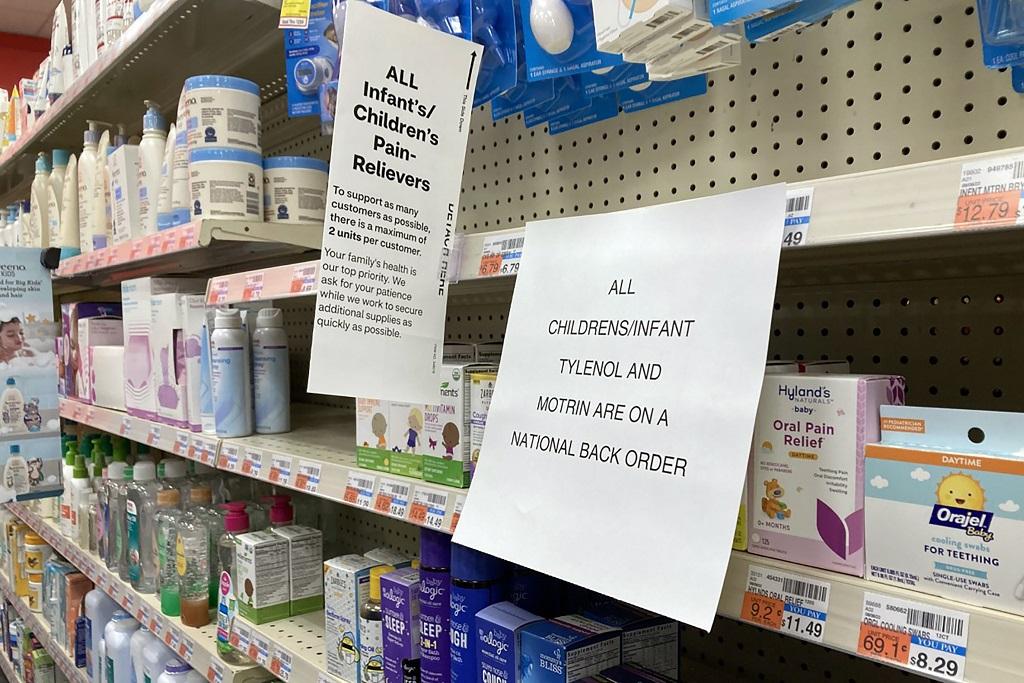After two winters of spiking COVID-19 numbers, the pandemic is certainly not over—in fact, U.S. families are now facing what has been called a “tripledemic,” with rising rates of COVID, respiratory syncytial virus (RSV) infection, and the flu. Along with the common cold and the usual viruses that spread around this time of the year, the rise in upper respiratory infections has led to widespread shortages of antibiotics that are often used to target secondary infections, such as amoxicillin, azithromycin, and augmentin. On top of that, pharmacies are seeing shortages of over-the-counter medications, especially for children, leading to purchasing limits being imposed to ration supplies.
Americans don’t have to be at the mercy of these shortages. It’s not too late to get a flu shot or an updated COVID booster to protect against that virus’s most recent variant. But the government can also act. There is an option that the White House can take now in addressing shortages: use of the Defense Production Act (DPA) to support accelerated production of critical medications. President Biden should use this power to compel drug manufacturers to meet current demand and increase antibiotic production.
We advocated for Biden to wield the power of the DPA last year during the omicron surge, calling on the administration to compel production of COVID tests on a greater scale in order to guarantee their availability. As Revolving Door Project’s Timi Iwayemi wrote, Title III of the DPA allows the president to “provide financial incentives to develop and expand the production capacity of domestic sources of critical components, technology items, and materials essential to national security.”
Despite what some Senate Republicans would like to make us believe, the use of the DPA in a public-health context is well supported. While in office, President Trump used the Defense Production Act to order companies to produce key pandemic-response supplies, such as ventilators and masks. Almost immediately after taking office, Biden later used the DPA to address shortfalls in vaccine and COVID test stockpiles, and more recently, to push additional funding in the production of baby formula during a nationwide shortage in early 2022.
It’s clear that shortages are occurring because many manufacturers of critical antibiotics didn’t anticipate the surge of respiratory diseases coming earlier than usual. In retrospect, that’s not too surprising—after two winters encouraging social distancing, the use of masks, and general pandemic precautions, many Americans, particularly children, avoided the usual yearly round of respiratory infections. Now that most have returned to normal social gatherings, they’re coming back with a vengeance.
There are still prominent former government officials trying to argue that because these shortages supposedly aren’t caused by supply chain issues, interventions aren’t necessary. Former FDA Commissioner Scott Gottlieb posits that the “sophisticated supply chain” of pharmaceutical companies should catch up with demand soon, since the companies seem to be operating normally.
But it’s foolish to expect the highly concentrated pharmaceutical sector to respond quickly to this demand, and therefore unreasonable for there to be no government response or intervention. The FDA’s first report of a shortage came at the end of October—and now, nearly two months later, we’ve seen no targeted action to alleviate shortages or help increase production capacity. We badly need additional funding and directives to boost production of crucial antibiotics and other medications.
The worst phase of the COVID pandemic may be behind us, but this combination of viruses means many millions are still being sickened, some severely. This one action can help ease health care burdens in the weeks when hospitals and physicians are the most stretched thin.

